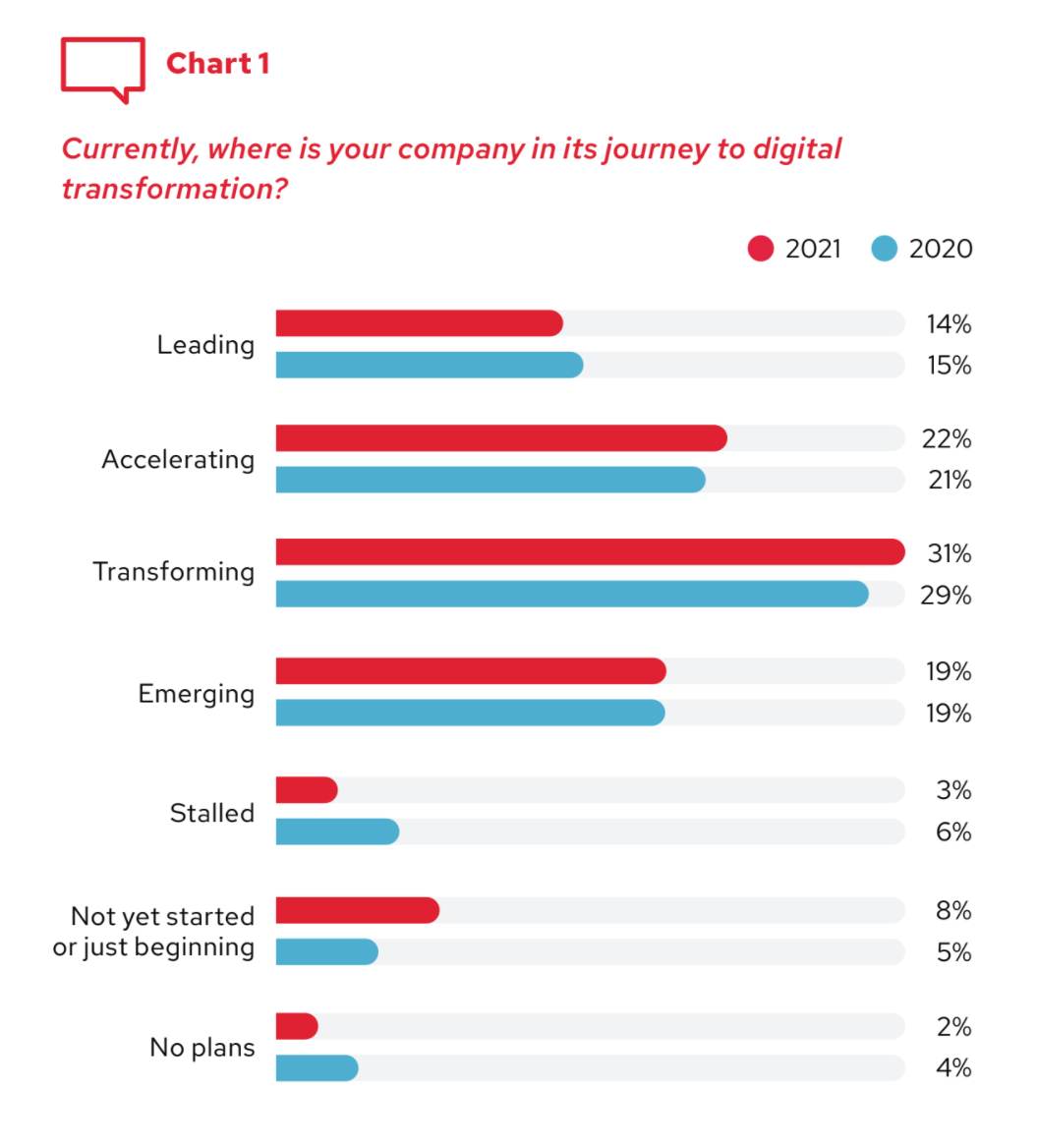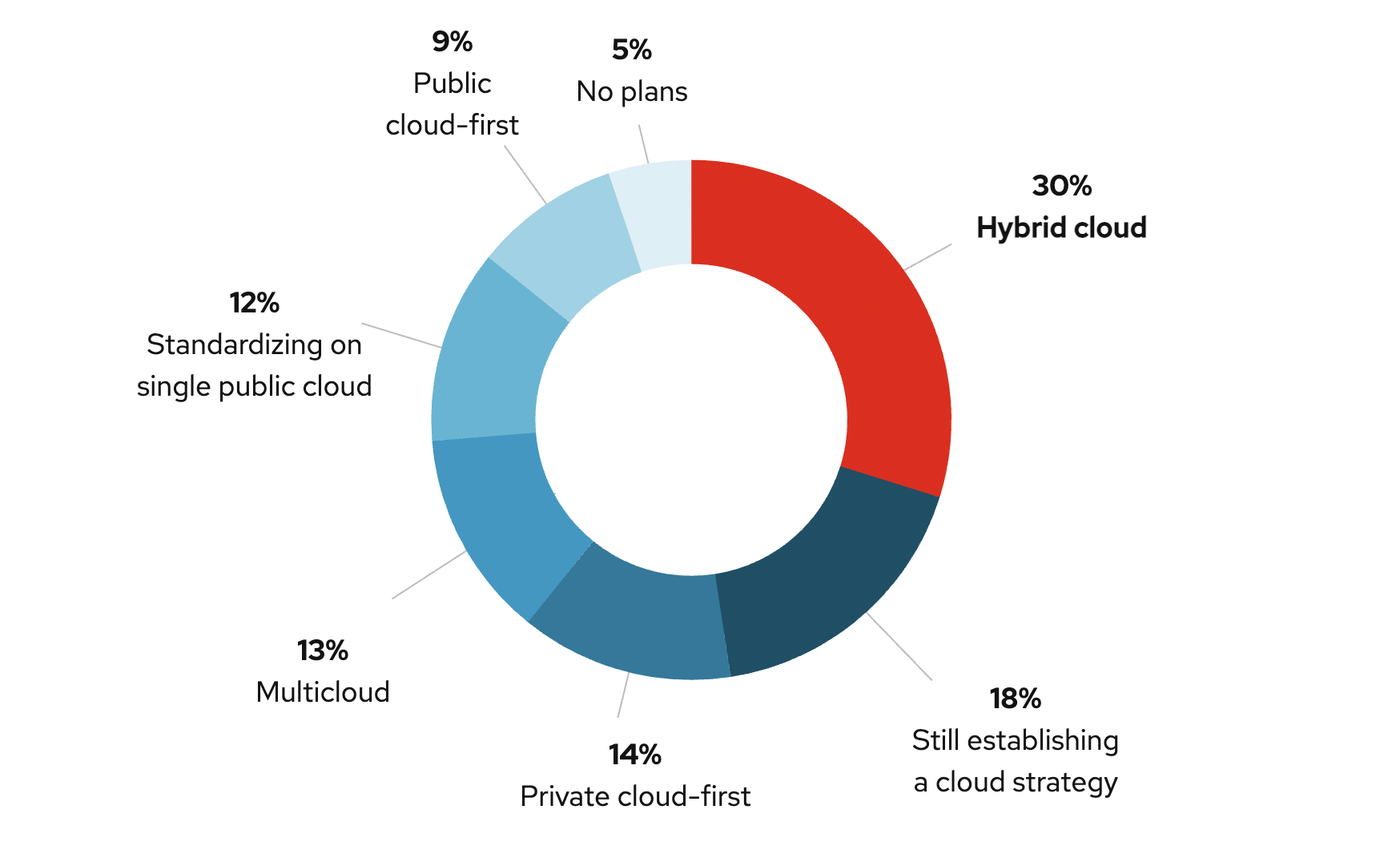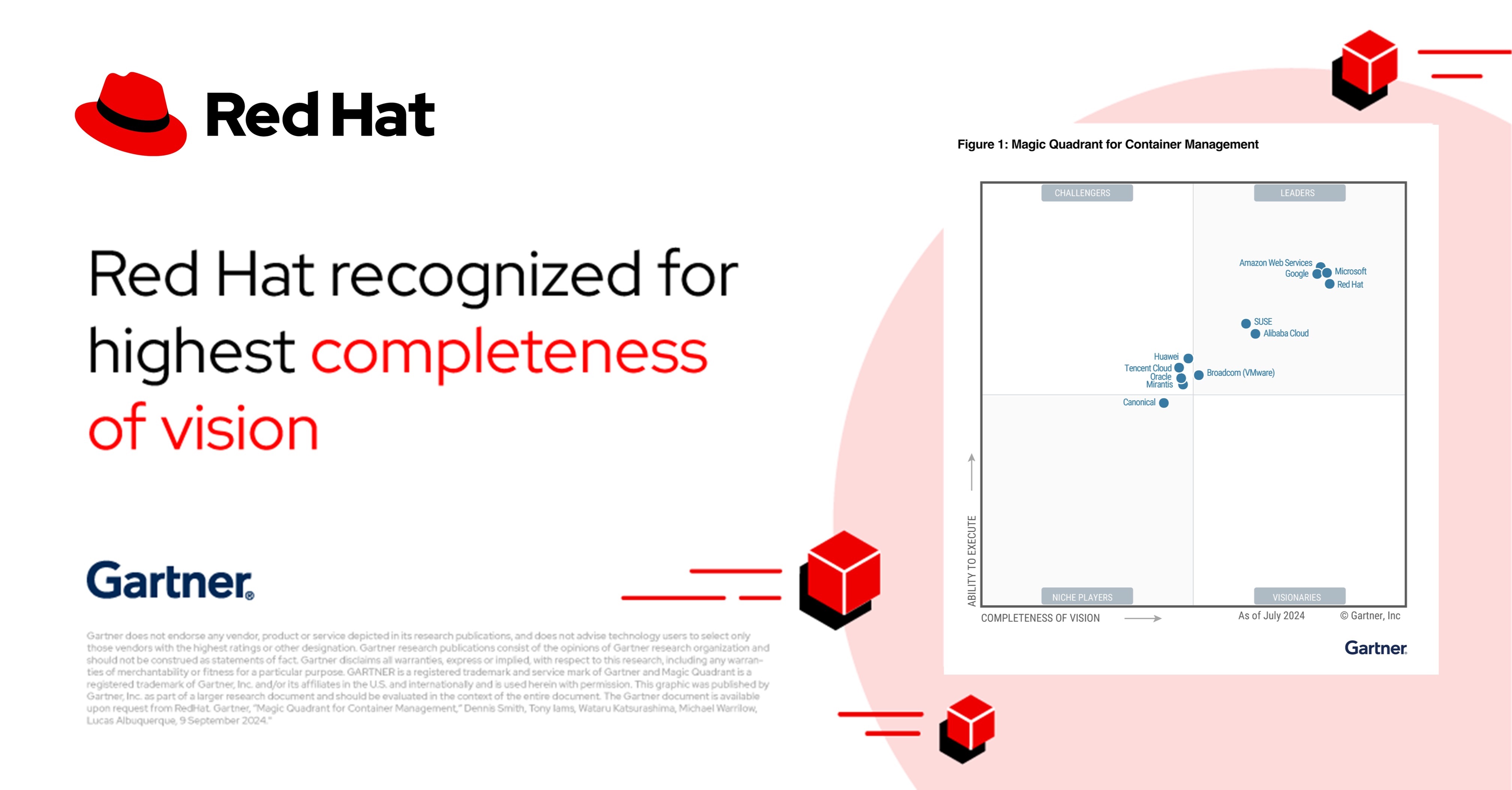
ผลสำรวจ 2022 Global Tech Outlook ของเร้ดแฮท ซึ่งทำการสำรวจความคิดเห็นของผู้นำด้านไอทีในองค์กรเป็นประจำทุกปี ปีนี้มีข้อมูลเชิงลึกที่น่าสนใจหลายประการ เช่น AI/ML, เอดจ์, และการประมวลผลโดยไม่ต้องพึ่งพาเซิร์ฟเวอร์ เป็นเทคโนโลยีใหม่ที่องค์กรที่ตอบแบบสำรวจจัดให้มีความสำคัญเป็นลำดับแรกๆ และผู้ตอบแบบสำรวจระบุว่า ช่องว่างด้านทักษะเป็นอุปสรรคสำคัญที่สุดต่อการเปลี่ยนแปลงสู่ดิจิทัล ผลสำรวจยังเผยให้เห็นสิ่งสำคัญอีกประการหนึ่ง คือ องค์กรที่เป็นผู้นำด้านการเปลี่ยนผ่านสู่ดิจิทัลกำลังวางแผนใช้กลยุทธ์ไฮบริดคลาวด์ แทนที่จะต้องพึ่งพาไพรเวท หรือพับลิคคลาวด์เพียงอย่างเดียว
Hybrid cloud strategy increasingly popular among digital transformation leaders
Every year, Red Hat surveys IT leaders and decision makers to learn their technology goals and priorities for the coming year, as well as where they are in their digital transformation journeys. This year’s Red Hat 2022 Global Tech Outlook report came with some interesting insights, including that AI/ML, edge and serverless computing are top priority emerging technologies for the year ahead, as well as skill gaps being identified as the top barrier to digital transformation initiatives. Another significant finding is that digital transformation leaders are increasingly planning a hybrid cloud strategy, instead of remaining solely dependent on either private or public clouds.
Red Hat 2022 Global Tech Outlook findings

Here, we’ll take a closer look at some of this year’s specific findings related to digital transformation stages, Red Hat customers versus non-customers, overall cloud strategies, and how all of these things fit together.
Digital transformation stages
One specific question we asked IT leaders is where their company currently is in its digital transformation journey, and the majority are well into the process—either transforming, accelerating efforts, or leading the charge. The number of companies in the "accelerating" and "transforming" stages are up over last year, and respondents cited the global pandemic (52%) and revenue increases (50%) as reasons for their acceleration.

What’s also interesting is that fewer companies are "stalled" or have "no plans" for digital transformation compared to last year, meaning that more companies are making progress, or are at least making plans.
Red Hat customers vs. non-customers
We also divided responses to this question to compare Red Hat customers and non-customers. What was most striking here is that nearly double the percentage of Red Hat customers consider themselves "leading" in their digital transformation processes.

Why do they say this? Red Hat customers indicated that having fewer talent gaps was the primary reason for this (53%), as well as having different barriers (such as technical debt) and success measures (such as delivering IT services faster) than non-Red Hat customers.
Last year, we published a case study with the Employers worker’s compensation insurance company that reflects these results.
To compete in an increasingly digital market, Employers sought to streamline its operational processes. The company decided to create a central application environment with Red Hat OpenShift running on AWS, and automate policy processes with Red Hat management and middleware solutions.
With its new cloud and Kubernetes environment, Employers has adopted a truly hybrid approach to IT infrastructure. Workloads can be hosted in a variety of environments to optimize performance. Now, Employers has a foundation for agile, responsive workflows, leading to a 40% increase in three-year sales and a more efficient customer experience.
They are also able to provide insurance quotes much more quickly. “Going from close to 20 minutes per quote to 2 minutes is a huge improvement, not only for our company but for the industry as a whole,” said Jeff Shaw, Executive Vice President and Chief Information Officer at Employers. “The amount of support we’ve had from Red Hat has been key to helping us move quickly and achieve value at the pace the market demands.”
Hybrid cloud vs. private cloud strategies
As for cloud strategies, a vanishingly small number of surveyed companies have no cloud strategy plans in place, at only 5%. While there is a significant portion (18%) still in the process of creating a strategy, the majority do have plans in place, including 30% having decided on a hybrid cloud strategy.

If we add organizations that chose multicloud—a term that many use interchangeably with hybrid cloud—the total selecting a cloud strategy relying on more than one cloud rises to 43%—up five percentage points from last year.
Digital transformation leaders and cloud strategies
Also when it comes to cloud strategy, organizations that consider themselves to be in the “leading” or “accelerating” stages of their digital transformation have a strong preference for hybrid cloud.
This is in contrast to organizationsthat are in the earlier stages of their digital transformation, who tend towards a private cloud-first approach. This suggests that digital transformation leaders understand and are able to take advantage of the flexibility and consistent experience of an open hybrid cloud platform.
Priorities: innovation vs. simplicity vs. cost
Finally, we looked at how organizational priorities shift between the different stages of digital transformation initiatives.
For those in the “leading” stage, 33% consider “innovation” to be their absolute top priority, with only 6% selecting “simplicity” and only 2% selecting “cost.”
This is in stark contrast to those in the “stalled” stage, where the numbers are 13% “innovation,” 11% “simplicity” and 13% “cost.”
This suggests that many digital transformation projects begin as efficiency efforts, but are later seen to be a key component in improving competitiveness, revenue growth and customer experience.
Why choose an open hybrid cloud strategy?
The greatest benefit of a hybrid cloud strategy is the ability to choose an optimal solution for each task or workload. Your organization might use on-premise infrastructure for storing sensitive data, for example, and public cloud services for application development or hosting.
You may also use multiple public cloud vendors to meet differing local regulations, or you can shift workloads from one to another in order to optimize pricing or demand. Or you may be interested in edge computing, looking to distribute compute and storage power closer to where your data sources and users live to deliver better customer experience and real-time decision making.
An open hybrid cloud strategy allows you to do all of these things with a consistent platform running portable workloads, allowing for greater flexibility, scalability and efficiency as your requirements grow and change.
Additionally, no one cloud provider or on-premises environment will have everything you want, and proprietary solutions can restrict your choices and adaptability in the future. In order to adapt to change without costly rebuilding, your hybrid cloud should be built on a consistent foundation of open source code.
Your operations, development and security teams can build and manage a full IT stack in a standard, unifying platform that works on bare metal, virtual machines, private clouds, public clouds, and at the edge.
How Red Hat can help
Red Hat has spent nearly 30 years creating neutral, interoperable solutions for your entire IT stack to help you on your digital transformation journey. We work directly within the Linux, Kubernetes, and other open source communities—contributing code, stewarding projects,
sponsoring events and more—to develop open source software built for enterprise deployments.
The 2022 Global Tech Outlook report includes a number of insights into organizations’ digital transformation journeys, including stages, plans, barriers and strategies. As in previous years’ surveys, we find that self-identified digital transformation leaders are more likely to have a hybrid cloud strategy and a significantly stronger focus on innovation over simplification and cost savings.
Article by

Arvind Swami,
Director FSI, Red Hat Asia Pacific

-
FutureTales Lab by MQDC ผนึกคณะจิตวิทยา จุฬาลงกรณ์มหาวิทยาลัย เผย 3...< ก่อนหน้า
-
ขอเชิญ อปท. ทั่วประเทศ อบรมเชิงปฏิบัติการ ทำเว็บไซต์เพื่อ ITA 2565...ต่อไป >

















